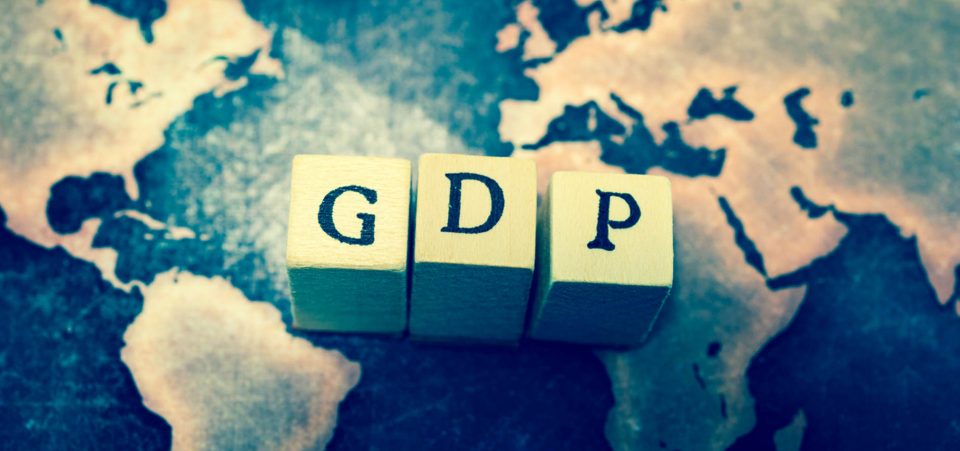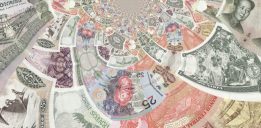The Poorest Country in the World
Which is the poorest countries in the world? Many are in Africa. But there are some in Asia and even in the Americas. Yet, while seemingly easy to rank, poverty is complex and comes in many forms. There is the poorest country by gross domestic product (GDP) or the poorest country by purchasing power parity (PPP). To determine the 2017 poorest country, this article will focus on GDP.
Poverty is a problem that afflicts much of the world. To measure it, you can use different indicators, such as the number of people living on less than two dollars a day, by PPP, or by GDP. But these indicators are always talking about the same thing: a life marked by poverty.
A better way to approach the question of which is the poorest country in the world would be to consider the country’s Gini index. This measures relative wealth. The greater the difference in income, or inequality between the richest and poorest, the greater the relative poverty. PPP is also useful, but from an overall investment angle, GDP per capita offers the most practical solution.
GDP, PPP, and Gini are mere statistics. They hide a sad reality that many in the West often forget. While many people in the United States or Europe are concerned about waiting too long for a coffee at the bar or if the car they want is available in the color they want, all over the world, there are people who are simply trying to make ends meet every day, trying to survive.
The people who live in the poorest countries in the world face struggling economies. Sometimes, they lack natural resources. More often than not, they have natural resources but cannot reap the benefits. But, overall, the poorest countries in the world cannot even make it as a third-world or developing nation. To be considered as such, they would have to be developing.
The Poorest Countries Are Not Developing
The countries appearing in this list of dubious achievements are, in effect, fourth-world countries. In other words, they have no current possibility of real development. Humanitarian aid is their main source of survival. Aid carries its own problems, but that’s the subject of a different article.
Because of the different ways to classify the poorest countries, you might be surprised by some omissions in the list below. It’s difficult to compile accurate statistics in the poorest countries, because the State institutions are weak. Often, there are wars that impede the gathering of statistics.
There is no doubt that these countries are every bit as poor as the lowest ranked below. Afghanistan is one of these countries. Its GDP per capita in 2015 was $619.80. Afghanistan today remains a disaster, even if there have been some political changes. But the security situation remains precarious.
There are areas where war has never stopped. Now, ISIS is competing with al-Qaeda and the Taliban for influence. The UN said that 2015 was the year with the largest number of civilian casualties since 2009.
Then there is Yemen. This country’s GDP per capita, estimated at $770.00, would certainly qualify it for a spot in the list of poorest countries 2017. Yemen is paying the price of a war that has received little attention.
It was one of the poorest countries before the war. Now, as new victims accumulate every day, especially among civilians, its GDP could be much lower. It could even be the poorest country in the world. The UN reports a catastrophic situation from all perspectives, human rights or basic security and refugees. Yemen might be facing one of the most severe humanitarian crises in the world at present.
And finally, right here in the Americas, there is Haiti. It has a GDP per capita of $727.00, which places it alongside the poorest countries in Africa. Despite substantial exports of sugar, coffee, bananas, and mangoes, Haiti remains one of the poorest countries. Unemployment affects more than 60% of the population.
The French founded Haiti in 1749. They settled there to set up sugar production, exploiting slavery. The capital, Port-au-Prince, originally belonged to the Spanish. In 1804, the African population of slaves revolted against the French and Haiti became the first ‘African’ (in a sense) republic to gain independence.
The Impact of Global Poverty for Americans
Migration will remain the defining feature of our time, a phenomenon which, according the International Organization for Migration (IOM), will continue well into the next three decades. Meanwhile, as much as the West might resort to erecting walls or barriers, migrants will find ways to divert. They will simply find new ways of reaching richer destinations.
Recently, the closing of the Balkan route, which saw many Syrian (or rather, people claiming to be Syrian) refugees being pushed back to the Mediterranean. A survey by Thomson Reuters Foundation suggests that migrants from Africa have found ways to reach North America. (Source: “Surge of African migrants brave Latin American jungle trek for U.S. dream,” Reuters, January 16, 2017.)
They fly to South or Central America, then try to reach Mexico. From there, they attempt to reach the United States. As Europe becomes more inaccessible, Latin America becomes attractive. Migrants fly to Ecuador, Guatemala, or even Rio, which may have looser visa restrictions.
They attempt a boat or land trek from Brazil or Colombia to reach Mexico. There, they link with the thousands of desperate people fleeing from local poverty thanks to traffickers. These migrants might be Somalis, Eritreans, or West Africans—just like the many who try to reach Europe. In Tijuana alone, the number of Africans attempting this route has increased five-fold. (Source: Ibid).
If President Trump decides to build a border wall, Mexico will end up with thousands of illegals of its own: there are no repatriation agreements with African countries.
Which Is the Poorest Country in the World?
The list below is assembled in descending order, starting with the country with the highest GDP per capita to the lowest. The first 10 positions of the poorest countries are occupied by African states based on GDP/capita, with statistics taken from the IMF’s October 2016 World Economic Outlook. (Source: “WORLD ECONOMIC OUTLOOK OCTOBER 2016,” International Monetary Fund, October 2016.)
| Rank | Country | GDP/Capita |
10  |
Nigeria |
$2,929 |
9  |
Zimbabwe |
$1,081 |
8  |
Eritrea |
$771 |
7  |
Sierra Leone |
$635 |
6  |
Togo |
$586 |
5  |
The Democratic Republic of Congo |
$489 |
4  |
Liberia |
$478 |
3  |
Central African Republic |
$372 |
2  |
Burundi |
$287 |
1  |
Malawi |
$286 |
10. Nigeria: GDP/capita $2,929 
Currency: Nigerian naira
Current Government: Federal Presidential Republic
Nigeria’s GDP is the highest in Africa at $537.0 billion. I have included Nigeria because of its contradictions. Nigeria has been one of the top two oil producers in Africa over the past few years. But its oil income is poorly distributed. An oil economy doesn’t benefit the clear majority of people.
Thus, the relatively high number for Nigeria betrays the harsher reality of real life. Nigeria is full of contradictions. Oil gives the semblance of economic development, but most of the people continue to live in abject poverty. This is caused by bad management of oil revenues and a notoriously high rate of corruption.
Life expectancy stands at 51 years for both women and for men. Lately, terrorist groups like Boko Haram have wreaked havoc in the north. They have linked their name to vicious attacks and other acts of extreme violence.
9. Zimbabwe: GDP/capita $1,081 
Currency: U.S. dollar, euro, Botswana pula, South African rand, and British pound
Current Government: Presidential Republic, but it’s an authoritarian regime in practice
Zimbabwe has faced a major HIV epidemic—in 2004 it was almost 20% of the population, mainly affecting women. Infant mortality rate has exceeded 12% since 2004, and the country has an illiteracy rate of 90%. The unemployment rate might be as high as 80% according to economists. But official statistics claim 11% for evident propaganda purposes. (Source: “W(h)ither Zimbabwe,” Zimbabwe Independent, January 11, 2017.)
8. Eritrea: GDP/capita $771.00 
Currency: Eritrean nakfa
Current Government: Presidential Republic, but in effect, it’s a military dictatorship.
One of the major problems of this country is the war with Ethiopia and the lack of a border resolution. It has caused substantial material and human damage, and has contributed to the decline of export products. Like nearly all African countries under the same conditions, Eritrea could be rich. It has major deposits of gold, potash, phosphate, and many other important materials. Some companies from the West have tried to develop these resources but political risks are too high.
7. Sierra Leone: GDP/capita $635.00 
Currency: Sierra Leonean leone
Current Government: Presidential Republic
Sierra Leone is still suffering the effects of civil war in the 1990s. It saw numerous coups. But it has substantial mineral resources even though the people of Sierra Leone live in total poverty. Recently, Sierra Leone saw a major Ebola epidemic scenario, which has further aggravated living conditions and mortality rates.
6. Togo: GDP/capita $586.00 
Currency: CFA franc
Current Government: Semi-Presidential Republic
Almost a third of Togo’s inhabitants live below the international poverty line—that is less than $2.00/day. Yet, merely three decades ago, Togo was one of the richest countries in Africa.
5. The Democratic Republic of Congo: GDP/capita $489.00 
Currency: Congolese franc
Current Government: Semi-Presidential Republic
It is a country with great potential, but the population has not reaped the gains from its many resources. It has diamonds as well as Coltan, needed to extract materials used to make many electronic devices. Local agriculture is at a subsistence level and most food should be imported.
4. Liberia: GDP/capita $478.00 
Currency: Liberian dollar
Current Government: Presidential Republic
This country has endured various coups and a disastrous involvement in civil wars, spilling over to neighbors and vice-versa. The economy of Liberia was literally disintegrated, GDP has seen a dramatic fall, and even if there were some semblance of recovery, the unemployment rate has stabilized at 50%.
3. Central African Republic: GDP/capita $ 372.00 
Currency: CFA franc
Current Government: Presidential Republic
The Central African Republic has always been one of the world’s poorest countries, with a life expectancy of 48 years. A recent and violent coup has undone any progress made in the past decade. The CFA is experiencing a humanitarian crisis of unprecedented proportions, which the world has ignored. The country has limited access to health services and food reserves among other problems.
2. Burundi: GDP/capita $287.00 
Currency: Burundi franc
Current Government: Presidential Republic
Nearly nine million people have witnessed and still pay the consequences of the ethnic conflict between Hutu and Tutsi, which devastated neighboring Rwanda in 1994. There are frequent droughts, which complicate farming and grazing, exacerbating ethnic tensions.
1. Malawi: GDP/capita $286.00 
Currency: Malawian kwacha
Current Government: Presidential Republic
Despite some of Africa’s most successful farming reforms, which increased food production, Malawi’s population still relies on humanitarian aid. Malawians suffer from one of the lowest life expectancies in the world: 47 years. Children suffer heavily because of the lacking health and educational possibilities. One in eight children dies before their fifth birthday and almost half of children under age five are malnourished. (Source: “Magazine claims Malawi Poorest country in the World,” The Maravi Post, December 22, 2016.)






